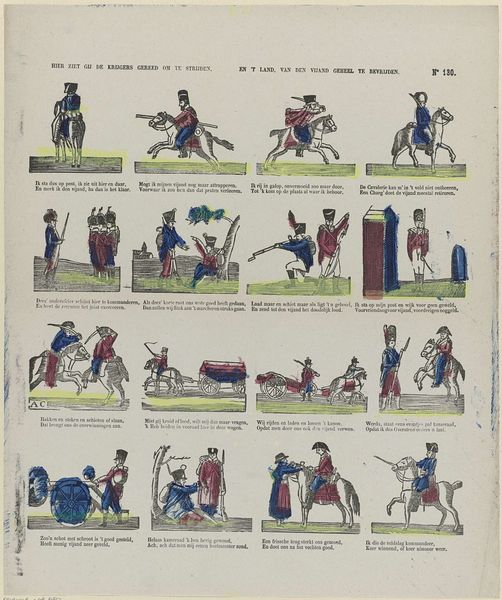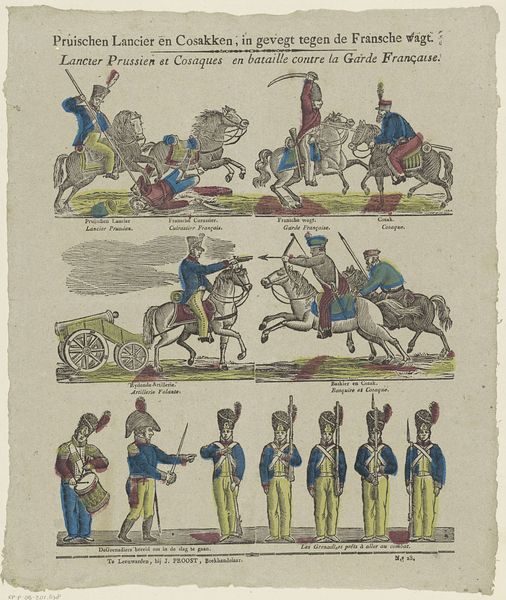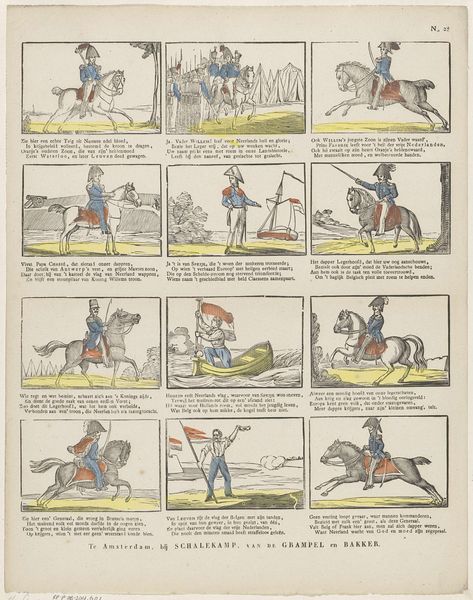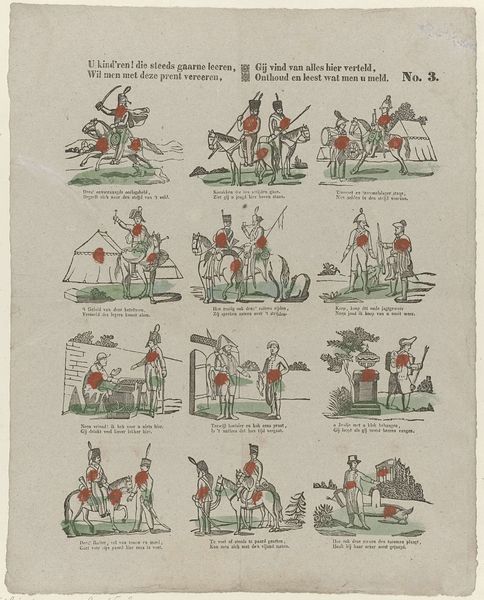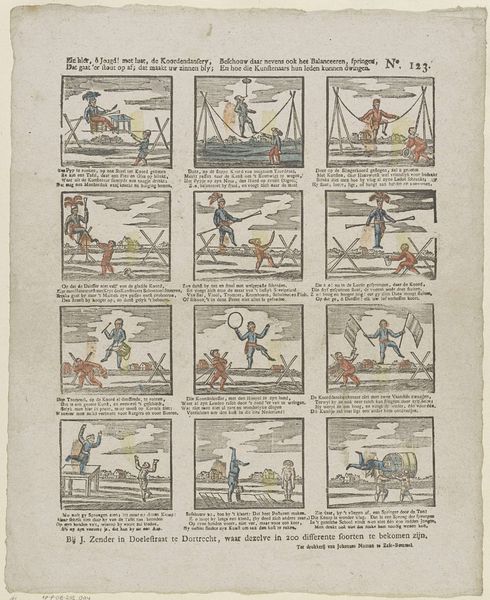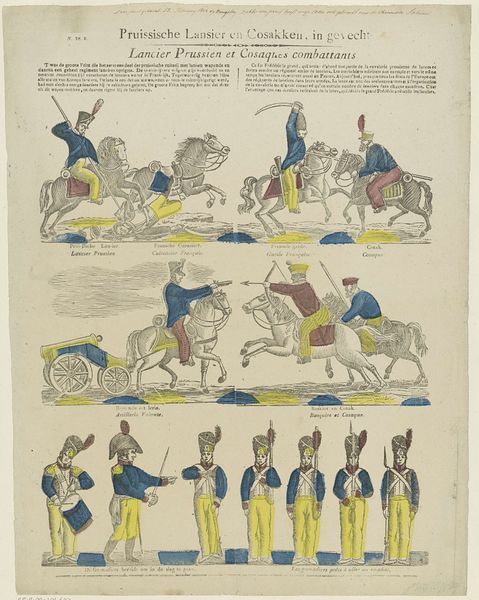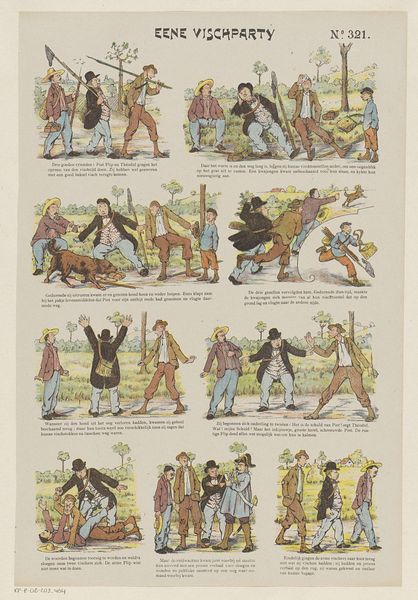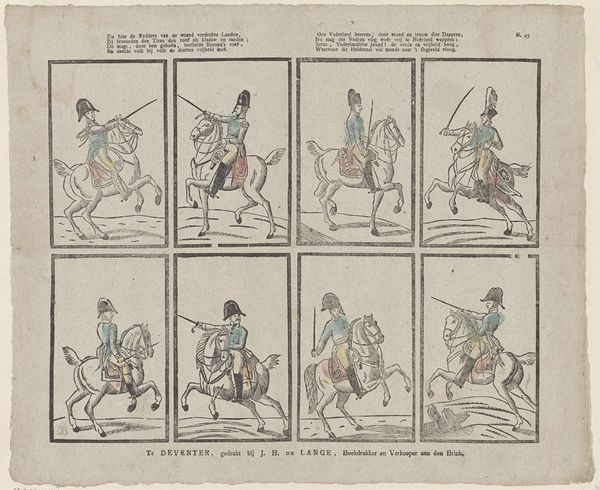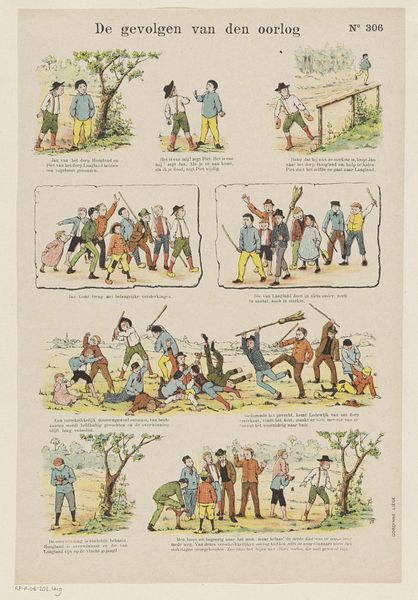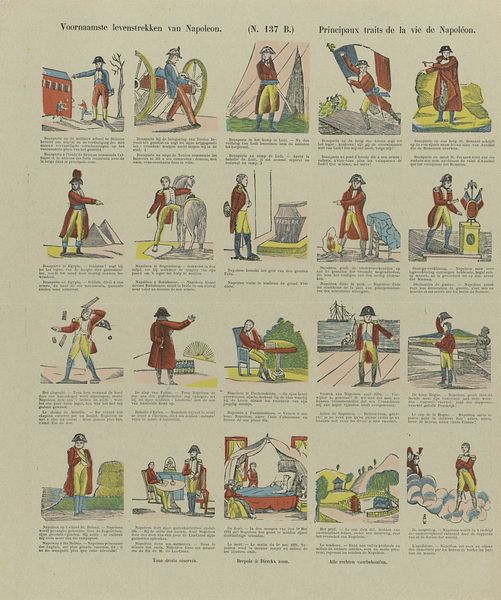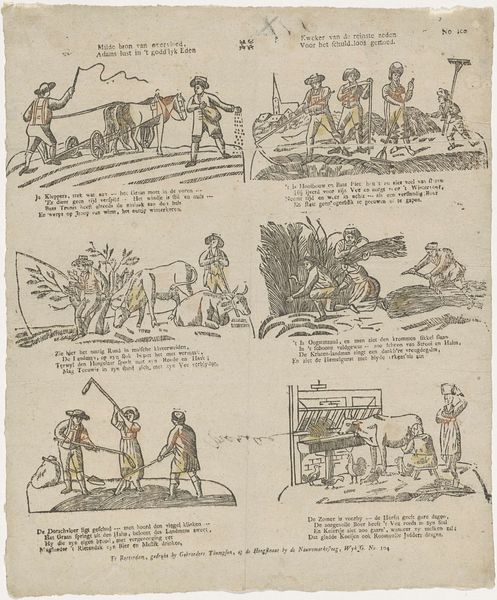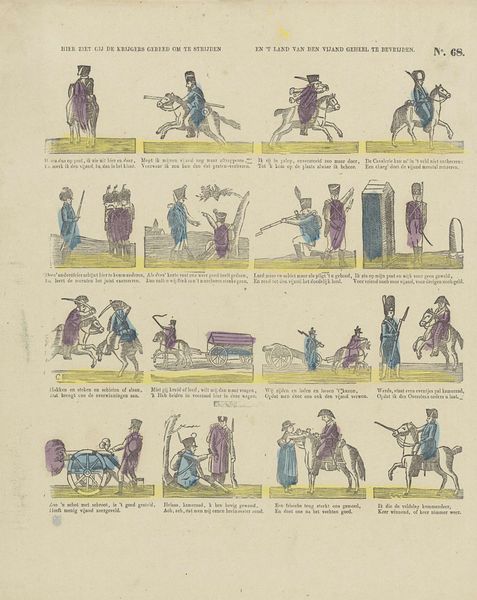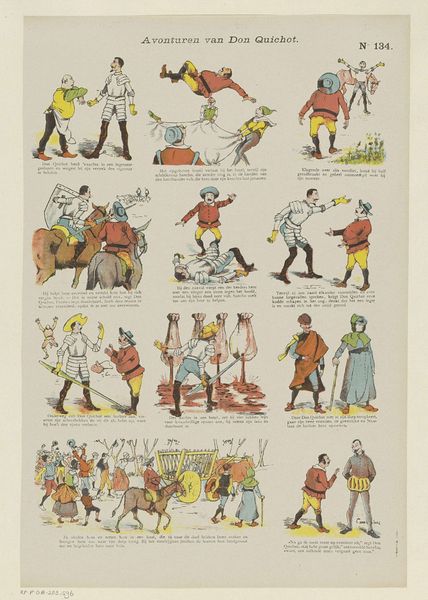
Hier ziet gij de krijgers gereed om te strijden, en 't land, van den vijand te bevrijden 1850 - 1870
0:00
0:00
Dimensions: height 361 mm, width 286 mm
Copyright: Rijks Museum: Open Domain
Curator: We're looking at a print titled "Hier ziet gij de krijgers gereed om te strijden, en 't land, van den vijand te bevrijden," which translates to "Here you see the warriors ready to fight, and the land, to free from the enemy." Created sometime between 1850 and 1870 by P.C.L. van Staden Czn., it's a fascinating example of genre-painting, I think. Editor: My immediate reaction is to the stiff, toy-like quality of the figures. They have a certain charm but appear quite formal, almost like little soldiers on a board game. Curator: That formality speaks to the conventions of 19th-century printmaking intended for a specific audience and use. These types of prints were often created for educational or propagandistic purposes, especially with nationalistic undertones of heroism and duty that was common for the era. They reflect a societal need to rally support, both emotionally and ideologically, around military ventures. Editor: Absolutely, and the visual language amplifies that. Notice the consistent use of uniforms and weaponry—potent symbols of power and order. The soldiers are not portrayed as individuals but as archetypes of military strength and resolve. The visual uniformity, the clear distinction between 'us' and 'them', are doing some heavy symbolic work here, playing with ideas of collective identity. Curator: That visual structure reinforces the broader historical context, doesn’t it? Looking at the title, which highlights the intention of liberating the land, is very telling of this work being created within a context of frequent conflicts, territorial ambitions, and the rise of national identities in the mid-19th century. These visual narratives really shape public opinion and cement ideals of patriotism. Editor: Indeed. And each little scene tells a micro-story, furthering the nationalistic narrative and providing viewers with idealized images of valor and conquest. Beyond any particular battle or event, these scenes contribute to a long-standing iconography of heroism. I would imagine it served well to shape ideas, to form identity and pride, and possibly justify expansionist ideas. Curator: It’s so interesting to see how seemingly simple prints were very much entwined with shaping national identity during periods of social change. Thank you for bringing to light so many interesting elements. Editor: Thanks, the blend of simplicity and overt symbolism makes this a memorable commentary.
Comments
No comments
Be the first to comment and join the conversation on the ultimate creative platform.
